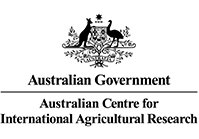
Pacific Pests, Pathogens & Weeds - Mini Fact Sheet Edition
Brown marmorated stink bug (405)

Summary
- Widespread. Asia, North America, Europe, Oceania. In Guam.
- An invasive and damaging pest of fruit trees, row crops, vegetables, woody ornamentals, wood lots. More than 100 hosts. Sucks sap and inject toxins. Feed on fruits causing spots, sunken areas, distortions, death.
- A stink bug (up to 17 mm); smell when disturbed! Eggs cream to yellow orange in clusters; nymphs dark heads, orange abdomens and black stripes; adults mottled brown with black and white markings at edges. In temperate countries, adults aggregate in autumn to find cracks and crevices to overwinter (homes, luggage, machinery, cars, cargo). Spreads on the wing over short distances; spread long distances as hitchhikers on ships, and via horticultural trade.
- Natural enemies: Trissolcus species important in Asia.
- Biosecurity: quarantine measures; high vigilance, many interceptions reported.
- Cultural control: no effective recommendations.
- Chemical control: neonicotinoids and pyrethroids, but i) resistance to pyrethroids may be developing, and ii) their use has resulted in outbreaks of other pests due to loss of natural enemies.
Common Name
Brown marmorated stink bug, also known in Asia as the yellow-brown stink bug.
Scientific Name
Halyomorpha halys
AUTHOR Grahame Jackson
Information from CABI Halyomorpha halys (brown marmorated stink bug) (2019) Crop Protection Compendium. (www.cabi.org/cpc); and from Plant Health Australia. (https://www.planthealthaustralia.com.au/wp-content/uploads/2016/04/Brown-Marmorated-Stink-Bug-FS.pdf). Photos 1&2 Gary Bernon, USDA APHIS, Bugwood.org. Photo 3 Kristie Graham, USDA ARS, Bugwood.org. Photo 4 Susan Ellis, Bugwood.org.
Produced with support from the Australian Centre for International Agricultural Research under project HORT/2016/185: Responding to emerging pest and disease threats to horticulture in the Pacific islands, implemented by the University of Queensland and the Secretariat of the Pacific Community.
This mini fact sheet is a part of the app Pacific Pests, Pathogens & Weeds
The mobile application is available from the Google Play Store and Apple iTunes.




Copyright © 2020. All rights reserved.
 Pacific Pests, Pathogens & Weeds - Mini Fact Sheet Edition
Pacific Pests, Pathogens & Weeds - Mini Fact Sheet Edition